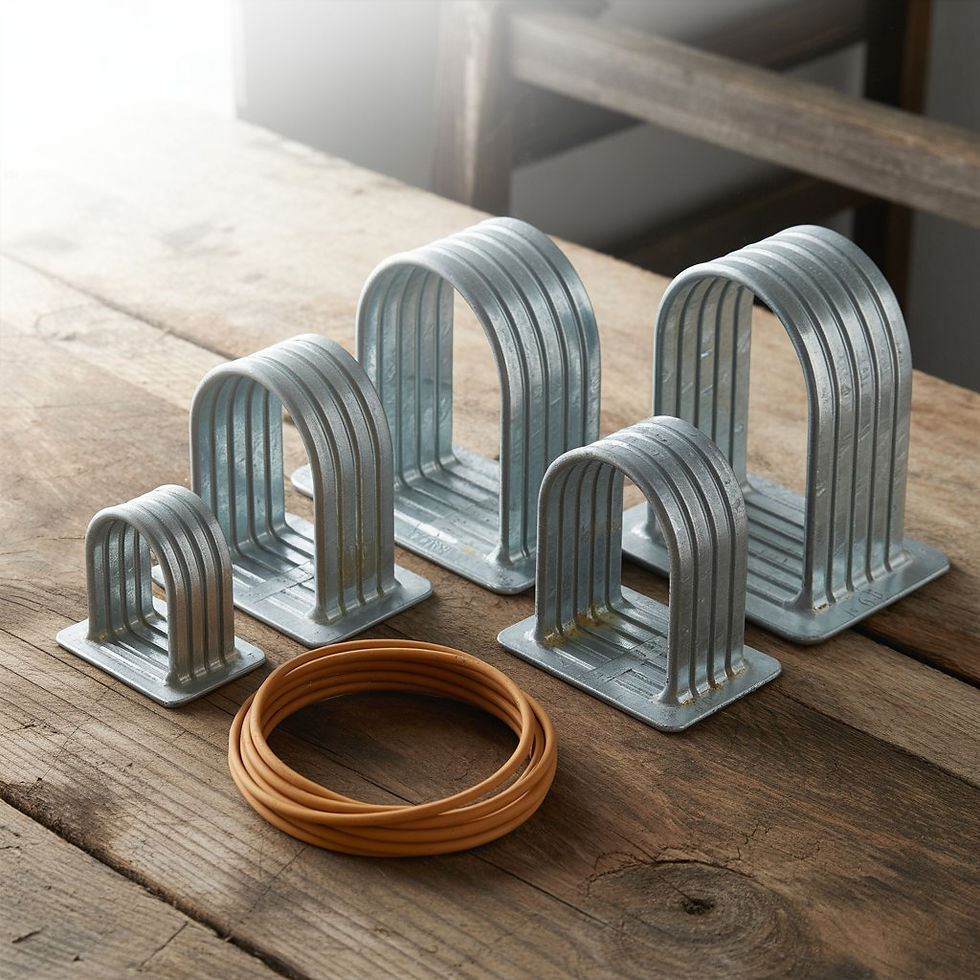Boost Installation Safety and Efficiency with Certified Cable Cleats
- Nasco Corp
- May 20
- 3 min read

In electrical installations, safety and performance go hand-in-hand. But there's one overlooked component that could determine both: certified cable cleats. Whether in industrial plants, data centers, or substations, a cable tray isn’t truly safe unless it’s equipped with certified cable cleats—devices that protect against short-circuit events and cable movement during electrical faults.
This article explores why certified cable cleats are critical, how they enhance safety and efficiency, and what compliance standards they help meet. Let’s get into it.
⚡ What Are Cable Cleats and Why Are They Essential?
Cable cleats are mechanical devices designed to secure, support, and restrain electrical cables within a cable tray system. They ensure cables stay in place under normal operation and during short-circuit conditions.
✅ Key Functions of Cable Cleats:
Short-circuit protection: Prevents cables from whipping due to high fault currents.
Mechanical restraint: Secures cables against movement from thermal expansion, vibration, or load.
Organized cable layout: Maintains spacing and alignment, improving airflow and reducing overheating.
Fire risk reduction: Limits contact between cables that could result in electrical arcs or fires.
Expert Insight: “Without proper cable restraint, even a small fault current can cause major cable displacement, leading to downtime, fires, or system damage,” says a senior engineer at NASCO Corp.
🔍 Why Certification Matters: IEC 61914 and NEC Compliance
Not all cable cleats are created equal. To be considered certified, cable cleats must pass rigorous testing and conform to standards like:
IEC 61914: International standard for cable cleat performance under short-circuit conditions.
NEC (National Electrical Code): U.S. code requiring mechanical protection in high-voltage cable runs.
IEEE and UL: Certification bodies for grounding, fire resistance, and safety performance.
🛡️ Benefits of Certified Cable Cleats:
Proven ability to withstand short circuits (up to 33kA in some cases)
Ensured compatibility with various tray systems (ladder, perforated, or solid-bottom)
Reduced risk of non-compliance penalties during inspections
Increased confidence in installation safety for mission-critical infrastructure
💡 How Cable Cleats Boost Compliance & Reduce Costs
Beyond safety, certified cable cleats offer a strategic advantage in both budgeting and long-term system health.
📉 Cost-Saving Benefits:
Minimized Downtime: Fewer unplanned shutdowns caused by cable failure.
Lower Insurance Risk: Enhanced fire safety and regulatory compliance can reduce premiums.
Extended Cable Life: Reduced mechanical wear means less frequent cable replacement.
Faster Installations: Cleats pre-configured for trefoil or single-cable layouts save labor hours.
🧰 Real-World Applications
Industries that regularly implement certified cable cleats include:
Data Centers – Where uptime is crucial, and fire prevention is mandatory.
Energy Plants – To withstand high fault currents in high-voltage systems.
Transportation Hubs – For underground and overhead cable tray installations.
Water Treatment Facilities – Needing corrosion-resistant cleat materials for humid environments.
Case Example: A large utility firm in Texas upgraded its substation cable trays using Ellis trefoil cleats from NASCO Corp and saw a 47% decrease in cable-related maintenance calls.
Read more...How Cable Cleats Boost Compliance & Reduce Costs
🛒 Where to Buy Certified Cable Cleats
North American Sales Company (NASCO Corp) offers a full line of IEC 61914-certified cable cleats, including Ellis Patents cleats known for their high fault-current tolerance.
Browse product specs, material types, and compatibility options with various tray systems.
📋 Installation Best Practices
For optimal results, follow these guidelines:
✅ Do’s:
Use cleats rated for your system’s maximum fault current.
Space cleats according to manufacturer and code recommendations (typically every 900mm).
Choose materials (SS316L, aluminum, polymer) based on environmental exposure.
❌ Don’ts:
Don’t mix uncertified cleats with certified ones.
Avoid over-tightening cleats, which can damage cables.
Never assume the tray alone will restrain cables under fault conditions.
📌 FAQs: Cable Cleats for Safety & Compliance
Q1. Are cable cleats required by code?
Yes. In many regions, including the U.S. and EU, cleats are required by NEC and IEC 61914 standards for high-voltage installations.
Q2. What’s the difference between trefoil and single cable cleats?
Trefoil cleats hold three cables in a triangular (trefoil) formation, while single cleats support each cable individually. Trefoil is often used for three-phase circuits.
Q3. How often should cable cleats be installed?
Spacing depends on the system and fault level, but the general rule is every 300–900mm along the cable route.
Q4. Can cable cleats be reused?
Some metal cleats are reusable if undamaged, but most plastic or composite cleats are designed for single use.
Q5. Where can I get expert advice on selecting cleats?
You can contact NASCO Corp for free technical support and custom installation guidance.
✅ Final Thoughts
Certified cable cleats are not optional—they’re essential. They ensure electrical systems remain safe, efficient, and code-compliant. Whether you’re designing a new power infrastructure or upgrading an existing one, investing in high-quality, IEC-certified cable cleats can prevent disasters, save costs, and boost long-term reliability.
Don't compromise on safety—cleat it, or regret it.



Comments